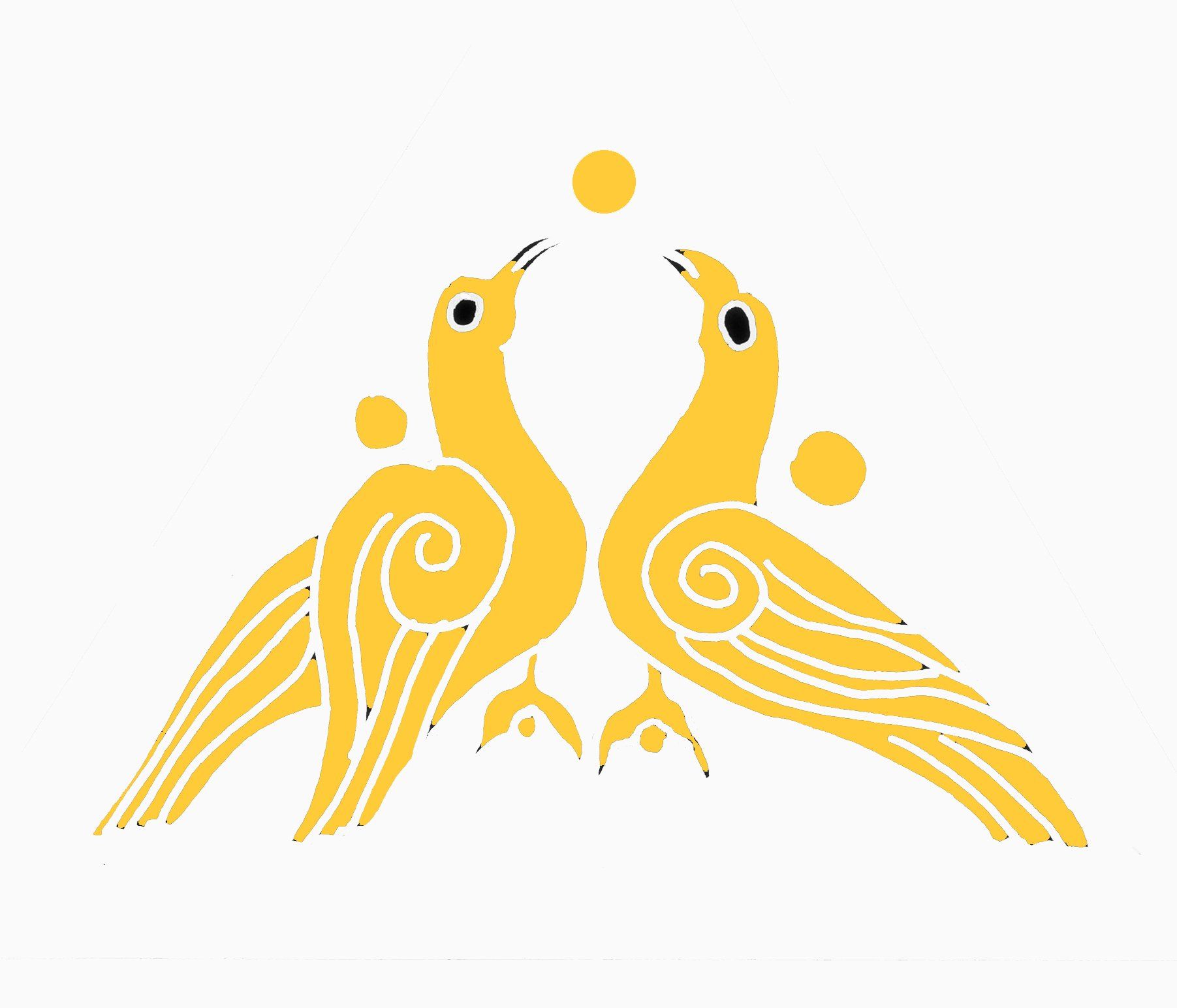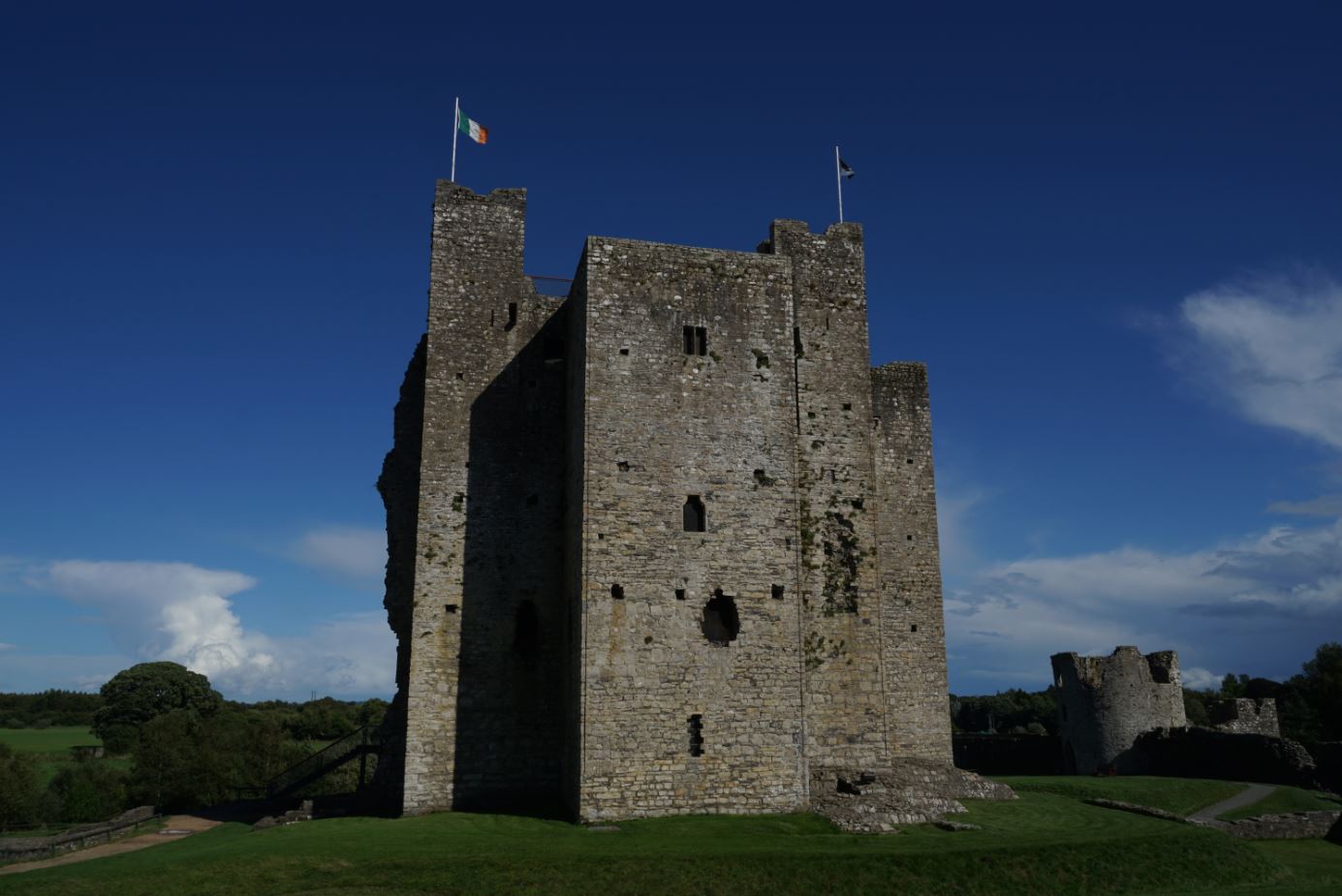1172 - Hugh de Lacy and the Lordship of Meath
One of the Norman knights who accompanied Henry II
to Ireland in October 1171
was Hugh de Lacy, whose Hereford family in England traced their origins to Lassy in Normandy. He was described by a contemporary writer as ‘resolute and reliable, restrained from excess by French sobriety’. That Hugh de Lacy came to Ireland in the company of Henry II was probably due to the fact that he was married Rose of Monmouth, a cousin of Strongbow. When Henry II had first arrived in Ireland he had granted Leinster to Strongbow, effectively replacing the ancient Irish kingdom of Leinster with a new Lordship of Leinster. Before he left Ireland in April 1172, Henry II granted de Lacy much of the ancient kingdom of Mide, roughly equivalent to the modern-day counties of Meath and Westmeath, thus establishing what became known as the Lordship of Meath. This comprised some of the most fertile lands in the country and had been previously ruled by Murchad Ua Máel Sechnaill, father of Derbforgaill
who helped build the Nun’s Church at Clonmacnoise.
The first problem that Hugh de Lacy encountered was that Derbforgaill’s husband, Tighearnán Ua Ruairc, refused to concede the lands of Meath, having only recently acquired them as a token of his loyalty to the Irish high-king, Ruiairí Ua Conchobhair. Tighearnán had submitted to Henry II in 1171, but he may not have realised the English king’s plans for the lands of Meath. In the summer of 1172, Hugh de Lacy parlayed with Tighearnán on the Hill of Ward near Athboy. After negotiations stalled, a dispute ensued in which an interpreter was killed by the blow of an axe aimed at de Lacy. Ó Ruairc was killed by a lance as he mounted his horse, and was decapitated. His head and body were impaled over the gates of Dublin Castle and his head was allegedly sent to Henry II.
Hugh was now in a strong position to begin to establish himself in Meath, but within a few months he and Strongbow were in Normandy fighting for their king. In 1174, while Hugh was away, his recently acquired lands in Meath were devastated by a coalition of forces led by Ruaidrí Ua Conchobair.
Hugh returned in 1175 and immediately began a military campaign that eliminated several local Irish chieftains that might impede his control of Meath. This military campaign probably forced Ruaidrí Ua Conchobair
to conclude the Treaty of Windsor
with Henry II in October that year. The new-found peace brought with it the stability that Hugh de Lacy needed to consolidate his lands in Meath. He established Trim as his chief residence, where he constructed a stone castle to replace his earlier wooden fortification that had been destroyed the previous year by Ruaidrí Ua Conchobair.
Hugh’s determination to consolidate and settle the lordship of Meath created a lot of tension between himself and Ruaidrí Ua Conchobair. In the end, however, both men decided that an alliance would be mutually beneficial. Sometime before 1180 Hugh’s first wife had died, and in that year he married Rose, the daughter of Ruaidrí Ua Conchobair. This was an alliance that was reminiscent of Diarmaid Mac Murchadha
and Strongbow some ten years earlier, and if history was to repeat itself, Hugh might expect to become lord of Connaught as well as Meath. This was not to be, but it didn’t prevent rumours circulating that Hugh had designs on securing the high-kingship of Ireland all to himself. In reality, Henry II needed Hugh de Lacy, who proved himself to be one of the most prolific castle builders in Ireland during this period, constructing castles to defend his own lordship, as well as assisting others in their attempts to consolidate lands in Leinster.
In April 1176 Strongbow died, and his son Gilbert was still a boy and too young to inherit his father’s lands. For the time being, Strongbow’s Irish lands in Leinster would be held directly by the king until Gilbert came of age. In 1177, at what became known as the Council of Oxford, a decision was made that had the potential to have a lasting impact on Ireland. Henry II made his nine-year old son, John, Lord of Ireland. As the fourth son of the king, it seemed unlikely that young John would succeed his father to the throne. Therefore, the objective of making John Lord of Ireland was simply setting the stage for making John king of Ireland when he came of age. This should be seen in the context of Henry II’s political approach to creating an empire that included not just England, much of Wales and now parts of Ireland, but also the western half of France. Known as the Angevin Empire, Henry’s older sons also held important roles within the administration of the French lands, Richard as count of Poitou and Geoffrey as duke of Brittany. Henry II himself claimed the title of king of England as well as duke of Normandy, duke of Gascony and duke of Aquitaine, through his marriage to Eleanor of Aquitaine. He also held the title of Count of Anjou, from which the Angevin Empire took its name. Henry II expected each of his sons to play a key role in the governance of his expanding empire.
In 1185, John was only seventeen years of age, but his father considered him old enough to send to Ireland and begin setting the ground for his future royal position here. It is probably no coincidence that in this year Strongbow’s son Gilbert, rightful heir of his father’s lands in Leinster, died while still considered a minor. As the king sought approval from the Pope to have his son recognised as king of Ireland, John landed at Waterford on 24th April that year with around 300 knights and numerous foot soldiers and archers. According to one contemporary source, several Irish chieftains came to pay their respects to John on his arrival at Waterford but were insulted by John’s entourage, who mocked and pulled their long beards. The Gaelic chieftains quickly realised that the young John was not yet a regal statesman like his father. Any hopes that the Irish kings would come to meet their new lord and submit to him in person were dashed. Instead, they simply shunned him. More importantly, John failed to curb the growing power of Hugh de Lacy, the most powerful Norman baron in Ireland. In December, John returned to England having achieved little during his seven months in Ireland.
Ironically, Hugh de Lacy died in 1186 while supervising the construction of a castle at Durrow, Co. Offaly. It is said that he was killed by a young man who had an axe hidden under his cloak. Rather than being killed in battle, he was murdered in a revenge attack for desecrating the highly regarded foundation at Durrow dedicated to St Columcille, by building his castle too close to its church. Henry II was said to have welcomed the news of Hugh’s sudden death and prepared to send John to Ireland once again. While preparations were underway, Cardinal Octavian arrived at the court of Henry II. In his company was Hugh de Nunant, the pope’s recently appointed legate to Ireland. Their purpose was to accompany John to Ireland for his coronation as king of Ireland. As John and his entourage waited at Chester for a fair wind to make the crossing, news reached the king of the death of his brother Geoffrey, count of Brittany. The coronation was immediately postponed as the king focused his attention on the latest family drama unfolding in France. This brought a sudden end to Henry II’s ambitions for his youngest son, and the plan that might have resulted in Ireland becoming a separate kingdom with its own line of Norman kings.


